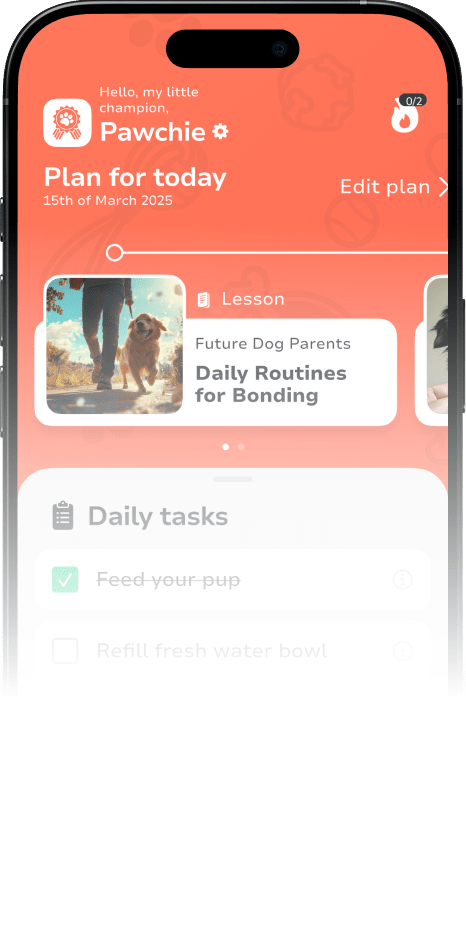If you’ve ever typed “where can I send my dog to be trained” into a search bar after a chaotic walk or a chewed-up shoe—welcome, friend. You’re not alone. Many loving dog owners reach a point where they need a little extra help. Maybe your pup struggles with leash walking, potty training, or staying calm around other dogs. Or maybe you just want to make sure your furry friend grows into a confident, well-adjusted companion for your own family.
That’s exactly where PawChamp comes in. Our mission is to help pet parents build healthy routines and strong relationships through positive reinforcement, kindness, and structure. Below, you’ll find everything you need to know about modern dog training—from group classes to private lessons, online coaching, and even service dog training and therapy dog training.
Key Takeaways
Choose positive reinforcement–based training programs only—never punishment.
Match the program to your dog’s unique personality, age, and your schedule.
PawChamp offers online training services and 24/7 support that fit real life at home.
Good training isn’t about control—it’s about trust, safety, and lasting connection.
Choosing the Right Dog Training Program
Finding the right match depends on your dog’s age, temperament, and your lifestyle.
If your puppy needs social skills and early structure, start with group classes.
If your dog struggles with focus or aggression issues, go with private training or short private lessons.
If you’re short on time, board and train provides immersive learning while you balance your schedule.
If you want long-term guidance, PawChamp’s online training programs give you expert help directly from your couch.
Every option can work—as long as it uses positive reinforcement and prioritizes your dog’s comfort and safety. Remember, good training never relies on fear. It builds cooperation and trust through small wins, consistency, and plenty of celebration.
Top Places to Send Your Dog for Professional Training
The modern dog training industry offers diverse options to meet the varied needs of pet parents and their dogs. Research indicates that positive, force-free training methods are more effective and have longer-lasting results than punishment-based methods. Understanding these different venues and their specialties helps you choose the most effective approach for your dog’s behavior and your family’s lifestyle.
1. Group Classes for Socialization
If you’ve got a new puppy or a friendly adult dog, group classes at a local training center are a great starting point. These sessions teach basic commands like sit, down, stay, and wait, while improving social skills and focus around other dogs.
Most group classes run for weeks or months at a time and include consistent practice between sessions to help reinforce good behavior. Trainers guide you through obedience training, loose leash walking, and impulse control so your dog learns to focus even in different environments.
💡 Pro tip
Dogs aren’t born knowing how to “walk nicely.” Gentle guidance, repetition, and plenty of treats make all the difference.
2. Private Training for Unique Needs
Sometimes your dog’s behavior needs extra attention—like separation anxiety, aggression issues, or general anxious behaviors. In that case, private training sessions are your best bet.
A certified professional comes to your own home to observe your dog’s behavior where it naturally happens. From there, they create a personalized dog training program designed around your goals and your dog’s unique triggers. These sessions allow professional dog trainers to help you manage canine behavior in real time while offering actionable guidance through texts or text messages.
💡Pro tip
These private training sessions typically cost $150-300 per session but offer unmatched personalization and attention to your dog’s unique behavioral patterns.
Private training helps you and your family work together to encourage good behavior and maintain safety for everyone involved. You’ll also learn to reward calm responses, build impulse control, and improve communication with your dog—without stress or punishment.
3. Board and Train for Busy Lives
If you’re short on time or dealing with more complex behavioral issues, a board and train program can help your dog learn essential skills quickly. During these immersive training sessions, professional dog trainers train dogs several times each day, focusing on structure, consistency, and positive reinforcement.
Your dog stays in a controlled, supervised environment while learning advanced skills such as calm greetings, reliable recall, and leash manners. Once the program ends, you’ll attend transfer lessons to learn exactly how to maintain progress at home.
💡Pro tip
Intensive 10-day programs typically cost $2000 for overnight boarding or $1500 for day training only, while extended 15-day programs are available for $2600 (boarding) or $2000 (day training). The pricing reflects the comprehensive nature of these programs and the intensive one-on-one attention each dog receives.
The best training programs offer post-graduation guidance for owners, ensuring good behavior lasts long after your dog returns. And while it’s a larger investment, many pet parents say you can’t say enough good things about the results when it’s done right.
4. Online Training and PawChamp Coaching
Sometimes the best way to train is right where your dog feels safest—home. PawChamp’s online training services offer customized training sessions guided by certified trainers through videos, messages, and feedback. You’ll follow step-by-step lessons to build confidence, fix behaviors, and reduce stress in your dog’s life.
Our experts help pet parents with everything from puppy training and potty training to loose leash walking and obedience training—all through fun, short practice sessions you can easily fit into your week.
Example: One PawChamp user said her rescue terrier went from barking at every sound to calmly walking down the street.
The success of online training depends heavily on owner commitment and consistency in applying learned techniques between sessions. Regular check-ins and progress assessments help maintain momentum and address challenges as they arise.
5. Service Dog and Therapy Dog Training
If your dream is to help your dog perform tasks that improve human well being, there are programs for that, too. Service dog training prepares dogs to assist people with disabilities or medical conditions, following standards from Assistance Dogs International. These assistance dogs might help with mobility, alert to medical changes, or provide essential support for veterans.
Meanwhile, therapy dog training focuses on preparing friendly, stable dogs to provide emotional support in hospitals, nursing homes, or schools. These gentle companions bring comfort and joy wherever they go.
Even if you’re not pursuing certification, the same foundation—positive reinforcement, patience, and effective dog training—creates calmer, more confident dogs ready to handle different environments with grace.
Questions to Ask Training Providers
Before committing to any training program, asking the right questions helps ensure you select a provider who meets professional standards and aligns with your training philosophy and goals.
Trainer Qualifications and Methods. Inquire about trainer certifications, education, and experience working with dogs similar to yours. Look for credentials from organizations like the Certification Council for Professional Dog Trainers (CCPDT) or similar professional bodies.
Program Structure and Outcomes. Ask about program duration, what specific skills will be taught, and what ongoing support is provided after training completion. Clear expectations help you evaluate whether the program meets your needs and budget.
Facility and Safety Standards. Request facility tours and opportunities to meet trainers before enrolling to assess cleanliness, safety measures, and overall environment. Quality providers welcome these requests and take pride in showcasing their facilities. Discuss policies regarding dog health requirements, emergency procedures, and communication protocols to ensure your dog will receive appropriate care throughout the training process.
Getting Started with Professional Dog Training
Once you’ve found a potential match, it’s time to prepare.
Start with an honest conversation about your goals and your dog’s behavior. Share when certain behaviors happen, who’s around, and what triggers them. This helps your trainer build a
Next, set practical goals. Write a short list of priorities—“barks at deliveries,” “pulls past strollers,” “struggles with guests”—and note where, when, and how often they occur. That clarity lets your coach target root causes, not just symptoms. For group classes, bring high-value treats and be ready to practice between lessons; for home coaching, prepare a quiet spot to rehearse basic commands and mat work. In any format, consistency is your superpower: short sessions, clear marks, generous rewards. If your calendar is bursting, choose formats that meet you where you are—online PawChamp plans or a brief board and train with strong transfer. Then keep momentum: five minutes today, five tomorrow, a little more next week. That’s how progress compounds.
Finally, protect the bond. Training should lower stress, build trust, and feel like teamwork. Use rewards to reinforce good behavior you want more of—soft eyes at the door, a pause before stepping out, easy turns on the leash. Celebrate small wins. Ask for help when you’re stuck. And remember that kind repetition is what turns training programs into family habits.
Final Thoughts: Training Is Love in Action
Choose a path you can truly sustain. Consider the time each option demands—group classes, private training sessions, board and train, or PawChamp’s online training services—and be ready to participate. Training works best when everyone at home follows the same cues, rewards, and boundaries.
Professional dog training is a smart investment in your relationship and your family’s well-being. Pick an approach that matches your dog’s unique needs and your household’s rhythm. Because the industry isn’t tightly regulated, look for professional dog trainers who use positive reinforcement and hold voluntary credentials (e.g., CCPDT). The range of training programs today means every dog owner can find help that fits—leading to calmer walks, clearer communication, and a stronger bond.
At PawChamp, we believe every dog deserves to learn with kindness, and every owner deserves support. Whether you choose group classes, private training, or online training services, what matters most is showing up with patience and heart.
As your furry friend gains new skills, you’ll notice the change isn’t just in your dog—it’s in your own family’s rhythm, your walks, your mornings. Training isn’t about perfection; it’s about partnership.
So, if you’re still wondering where can I send my dog to be trained, know this: you already have the most important ingredient—love. With the right program, expert guidance, and a lot of treats, you and your dog can reach your full potential together.
❣️ Quote to remember
“Reward what you love, and you’ll see it more often.”

